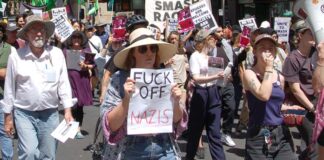A Queensland historian has uncovered the story of a mutiny by African-American troops stationed in Australia during World War II at an army base outside Townsville. The armed rebellion by 600 soldiers, brought to northern Australia to build airfields, was a product of the racism of the US army.
Tensions had simmered for months as two white officers serially abused the troops. Then claims an African-American sergeant had died at the hands of a white officer saw them reach boiling point. The troops armed themselves with machine guns and anti-aircraft weapons and set out to kill their commander, Captain Williams. Several hundred rounds were fired at his tent but he escaped by diving into a trench.
The discovery by Ray Holyoak, a researcher at James Cook University, shed light on a cover up that had lasted 70 years. Local rumours about the mutiny had circulated for decades.
Holyoak found documents hidden in the archives of the Queensland Police and the Townsville Brigade, which confirmed a 1942 report amongst the documents of Lyndon Johnson, later US President. He had visited Australia as a Congressman during the war to investigate the incident.
More than 10,000 African-American troops were based in North Queensland during the war. There were regular clashes between white US troops and Black soldiers in places like Brisbane and Ipswich as well as Torrens Creek, Ingham and Mt Isa in 1942.
The white American troops resented the fact that—surprisingly given the dominance of the White Australia Policy—many Australian servicemen and civilians welcomed the African-American troops, in breach of the prevailing segregationist policy in the US.
But the Australian government and ruling class were nowhere near as happy about the presence of Black troops.
As historian Kay Saunders points out, “Black American servicemen in Australia were subject to the restrictions of two interlocking systems of segregation—the first involved internal American practices; the second was imposed by Australian civilian authorities.”
The Labor Party came into office in October 1941, when two independents voted down the inept conservative government.
When the Japanese attacked Pearl Harbour in December, Curtin made his famous appeal to the US, as he realised it was beyond Britain’s ability to defend Australia.
Less well-known is that Curtin appealed to the US to help Australia as “the only white man’s territory south of the Equator”.
Curtin assured Parliament of Labor’s, “determination that this country shall remain forever… an outpost of the British races. Our laws have proclaimed the principle of White Australia. We intend to maintain that.”
The Australian War Cabinet categorically opposed the inclusion of African-American troops among Allied forces but dropped its opposition due to the needs of total war. The first significant contingent of Black troops arrived in Melbourne in late January 1942. The War Cabinet had to overrule a decision by customs officials at the point of entry refusing admittance to these troops.
On February 27 1942, two more Afro-American labour battalions disembarked in Melbourne, to the dismay of the Australian War Cabinet. L. D. Causey, the US Naval Attaché in Melbourne testified to the strength and resilience of “the doctrines of racial superiority here”.
In March, US General Douglas MacArthur, commander of US troops stationed in Australia, wrote to General Marshall in Washington, “I will do everything possible to prevent friction or resentment on the part of the Australian government and people with regard to the presence of coloured troops…their policy of ‘White Australia’ is universally accepted here.”
The Office of Strategic Services (the predecessor of the CIA) reported that Aboriginal people, “have no status in Australian Society and their existence is scarcely recognised.”
However, during the war Aboriginal people were seen as a threat by White Australia. The sensationalist Sydney newspaper The Truth wrote in March 1942, “Thousands of wild Aborigines [sic] in coastal areas of the Northern Territory are a great potential Fifth Column. For gifts of tobacco and food they would aid anybody, white or yellow.”
The Truth didn’t mention that Aboriginal people in the North Australian Observer Unit (NAOU) were not paid by the military in wages, as they should have been, but in tobacco. An Australian Colonel Murray in Townsville ordered that in case of invasion, “Aborigines [sic] were the first to be shot.”
At the end of the war, the RSL “unreservedly insisted on the continuation of the policy” of White Australia. As Immigration Minister of the Labor government until 1949, Arthur Calwell saw it reimposed and did his best to support their wishes.
Tom Orsag





